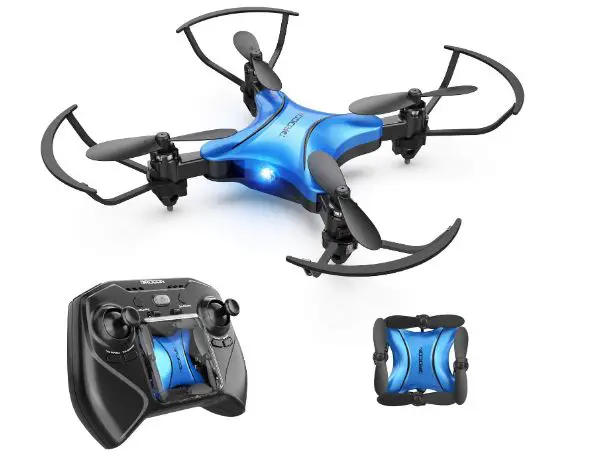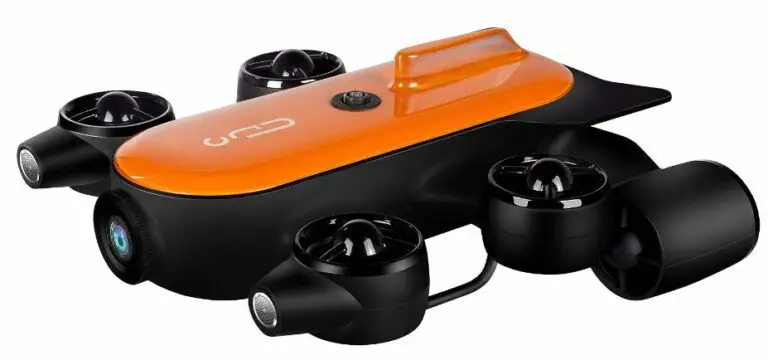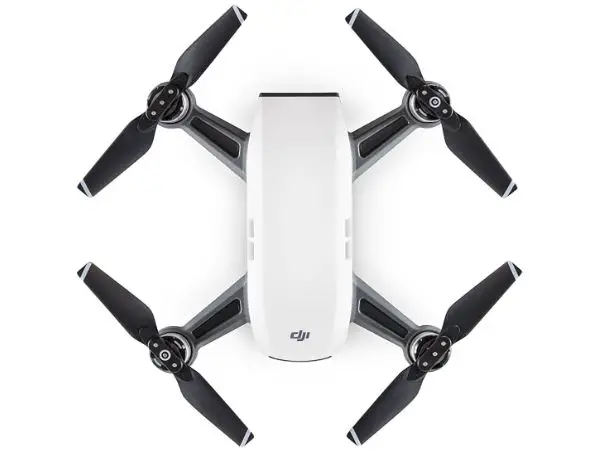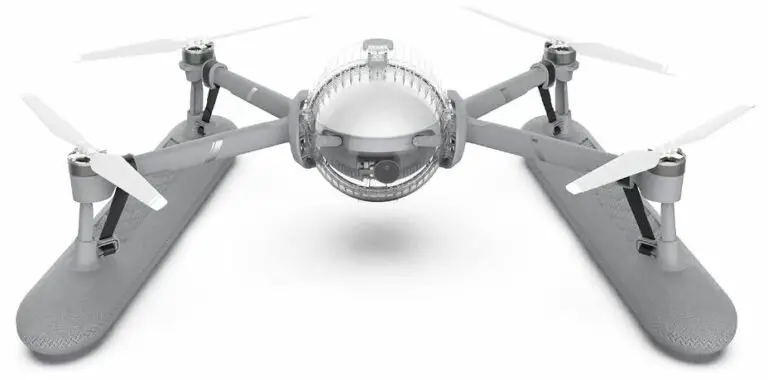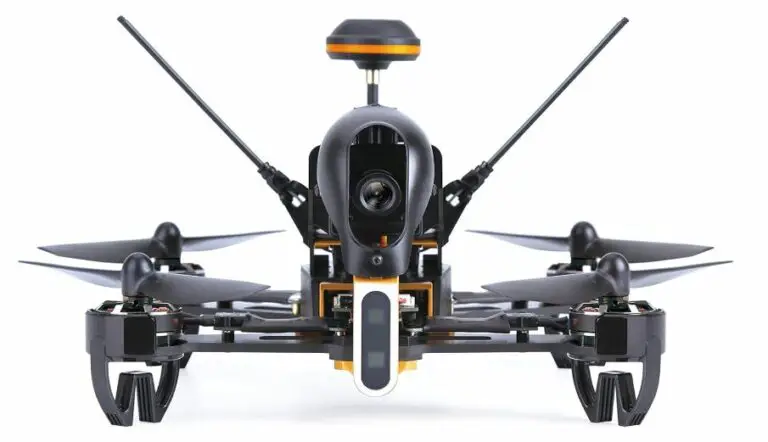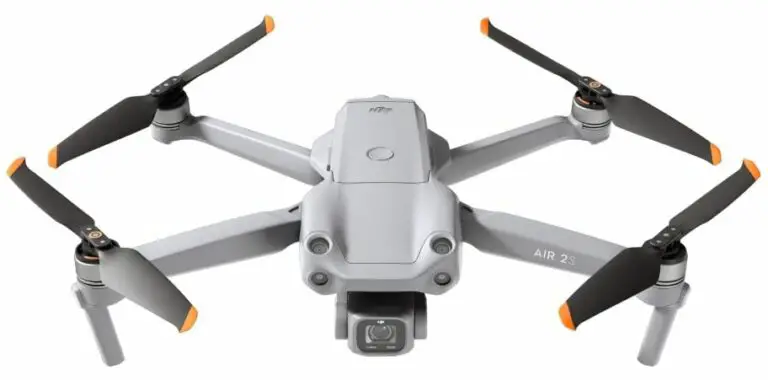Search and Rescue Drone Explained
Introduction
Search and rescue (SAR) operations are critical endeavors aimed at locating and aiding individuals in distress, often in remote or hazardous environments. In recent years, the integration of drones into SAR efforts has revolutionized the way these missions are conducted.
This section will provide an overview of search and rescue drones, highlighting their importance, capabilities, and the significant impact they have had on SAR operations worldwide. We will explore how these unmanned aerial vehicles (UAVs) have enhanced the efficiency, effectiveness, and safety of search and rescue efforts, ultimately saving lives in the process.
Design and Features
Search and rescue drones are purposefully designed to withstand challenging environments and support complex missions. Here are some key design elements and features commonly found in search and rescue drones:
- Robust Construction: Search and rescue drones are built with durability in mind. They often feature ruggedized frames, reinforced components, and weather-resistant materials to withstand harsh conditions such as high winds, rain, and extreme temperatures.
- Modular Design: Many search and rescue drones have modular designs, allowing for easy customization and integration of additional equipment and payloads. This flexibility enables operators to adapt the drone to specific mission requirements, such as adding thermal cameras, medical supplies, or communication devices.
- Foldable or Compact Form Factor: Portability is essential for search and rescue drones, especially in remote or inaccessible areas. Some models feature foldable arms or compact designs that make them easy to transport and deploy quickly, even in challenging terrain.
- Long Endurance: Search and rescue operations may require drones to remain airborne for extended periods to cover large areas or conduct prolonged searches. As such, many SAR drones are equipped with high-capacity batteries or fuel-efficient propulsion systems that offer extended flight times.
- Payload Capacity: To support a variety of missions, search and rescue drones often have significant payload capacities. This allows them to carry various sensors, cameras, medical supplies, or rescue equipment to aid in locating and assisting individuals in distress.
- Multiple Sensors and Cameras: SAR drones are equipped with a range of sensors and cameras to gather critical data and provide real-time situational awareness. Common payloads include high-resolution cameras, thermal imaging cameras, multispectral sensors, LiDAR systems, and gas detectors.
- GPS and Navigation Systems: Precise navigation capabilities are essential for search and rescue drones to accurately locate targets and navigate complex environments. Integrated GPS systems, along with advanced navigation algorithms, enable drones to fly autonomously or assist operators in manual flight.
- Communication and Connectivity: Search and rescue drones often feature advanced communication systems to maintain connectivity with ground teams and relay vital information in real-time. This may include satellite communication, long-range radio systems, or mesh networking capabilities.
- Obstacle Avoidance and Collision Detection: To enhance safety and maneuverability, some SAR drones are equipped with obstacle avoidance sensors and collision detection systems. These features help prevent accidents and enable drones to navigate through cluttered or obstructed environments.
- Emergency Features: In emergency situations, search and rescue drones may include features such as emergency landing capabilities, automatic return-to-home functions, or fail-safe mechanisms to ensure safe operation and prevent loss of the aircraft.
By incorporating these design elements and features, search and rescue drones are equipped to handle the unique challenges and demands of SAR operations, providing valuable support to first responders and saving lives in critical situations.
Payload and Sensors
Payloads and sensors play a crucial role in the effectiveness of search and rescue (SAR) drones by providing vital information and capabilities for locating and assisting individuals in distress. Here are some common payloads and sensors used in SAR drones:
- High-Resolution Cameras: Equipped with high-resolution cameras, SAR drones capture clear images and videos of the search area, allowing operators to visually inspect terrain, identify landmarks, and search for signs of individuals in need of assistance.
- Thermal Imaging Cameras: Thermal imaging cameras detect heat signatures, enabling SAR drones to locate missing persons or survivors in low-light conditions, dense foliage, or adverse weather. These cameras can detect body heat and distinguish between humans and their surroundings, even from a distance.
- Multispectral Sensors: Multispectral sensors capture imagery across multiple wavelengths, providing valuable data for analyzing vegetation, terrain composition, and environmental conditions. This information can aid search teams in identifying areas with higher probabilities of finding survivors or detecting hazards.
- LiDAR Systems: Light Detection and Ranging (LiDAR) systems use laser pulses to create detailed 3D maps of the terrain, including elevation data and surface features. SAR drones equipped with LiDAR can generate accurate topographic maps of search areas, helping teams plan search routes and identify potential obstacles.
- Gas Detectors: Gas detectors equipped on SAR drones can detect hazardous gases such as carbon monoxide, methane, or hydrogen sulfide. This capability is particularly valuable in urban search and rescue operations, industrial incidents, or natural disasters where toxic gases may pose a threat to survivors or responders.
- Medical Payloads: Some SAR drones carry medical payloads, including first aid kits, defibrillators, or communication devices, to provide immediate assistance to injured or trapped individuals until rescue teams arrive. These medical supplies can help stabilize patients and improve their chances of survival during critical moments.
- Life Detection Sensors: Advanced SAR drones may be equipped with life detection sensors capable of detecting vital signs such as heart rate, breathing, or movement. These sensors enable drones to locate survivors buried under rubble, snow, or debris, guiding rescue teams to their precise location for extraction.
- Communication Equipment: SAR drones often feature communication equipment such as two-way radios, loudspeakers, or mobile hotspots to establish communication links between survivors, rescuers, and command centers. This capability facilitates coordination and provides reassurance to individuals in distress.
- Aerial Delivery Systems: Some SAR drones are equipped with aerial delivery systems capable of dropping essential supplies, life-saving equipment, or communication devices to survivors in remote or inaccessible locations. These systems enhance the drones’ versatility and effectiveness in providing assistance during emergencies.
By leveraging these payloads and sensors, SAR drones can gather critical information, locate individuals in distress, and provide timely assistance to support search and rescue efforts in various environments and scenarios.
Flight Performance
Flight performance is a critical aspect of search and rescue (SAR) drones, as it directly impacts their ability to cover large areas, navigate challenging terrain, and execute complex missions effectively. Here are key factors related to the flight performance of SAR drones:
- Range and Endurance: SAR drones should have sufficient range and endurance to cover extensive search areas and remain airborne for extended periods. Long-range capabilities allow drones to reach remote or inaccessible locations, while high endurance ensures sustained operation during prolonged missions. Drones with gas-powered engines or fuel cells often offer longer endurance compared to battery-powered counterparts.
- Speed and Agility: SAR drones should be capable of flying at sufficient speeds to quickly survey search areas and respond to emergencies. Agility and maneuverability are essential for navigating through cluttered or obstructed environments, such as dense foliage, urban areas, or disaster sites. Drones with responsive flight controls and aerodynamic designs can perform precise maneuvers and adapt to changing conditions effectively.
- Stability and Hovering Capability: Stability is crucial for SAR drones when conducting aerial surveys, capturing imagery, or performing precision maneuvers. Drones should have excellent hovering capability, allowing them to maintain a stable position in the air and capture clear images or videos without motion blur. Features such as GPS-assisted stabilization and altitude hold systems contribute to stable flight performance.
- Wind Resistance: SAR drones must withstand windy conditions and adverse weather to maintain control and stability during flight. High wind resistance ensures that drones can operate safely and effectively in challenging environments, such as coastal areas, mountainous regions, or open landscapes. Aerodynamic designs, robust construction, and advanced flight controllers contribute to improved wind resistance.
- Altitude and Terrain Adaptability: SAR drones should be capable of flying at various altitudes and adapting to different types of terrain encountered during search and rescue missions. They should have sufficient power and lift capability to operate at higher altitudes, such as mountainous terrain or elevated search areas. Terrain-following features and obstacle avoidance systems enhance drones’ ability to navigate diverse landscapes safely.
- Flight Modes and Autonomy: SAR drones may offer different flight modes and levels of autonomy to accommodate different mission requirements and operator skill levels. Autonomous flight modes, such as waypoint navigation or follow-me modes, enable drones to execute predefined flight paths or track moving targets automatically. These features reduce the workload on operators and enhance mission efficiency.
- Payload Capacity and Performance: The flight performance of SAR drones can be affected by the payload weight and distribution. Drones with higher payload capacities can carry larger and more sophisticated sensors, cameras, or equipment, but this may impact flight characteristics such as speed, endurance, and maneuverability. Optimal payload management ensures balanced flight performance and mission effectiveness.
Overall, SAR drones with robust flight performance characteristics can effectively support search and rescue operations by covering large areas, navigating challenging terrain, and providing timely assistance to individuals in distress. By prioritizing range, endurance, speed, agility, stability, and adaptability, SAR drones can maximize their operational capabilities and contribute to successful outcomes in critical situations.
Mission Planning and Execution
Effective mission planning and execution are essential components of successful search and rescue (SAR) operations involving drones. Here’s an overview of key considerations for planning and executing SAR missions with drones:
- Pre-Mission Preparation:
- Assessment of Objectives: Clearly define the objectives of the SAR mission, including search area boundaries, target demographics (e.g., missing persons, injured individuals), and priority search areas based on available information.
- Risk Assessment: Conduct a risk assessment to identify potential hazards, obstacles, and environmental factors that may impact the safety and success of the mission. Consider factors such as weather conditions, terrain complexity, airspace restrictions, and proximity to hazards (e.g., cliffs, bodies of water).
- Team Coordination: Coordinate with SAR team members, ground personnel, emergency responders, and relevant authorities to ensure effective communication, collaboration, and alignment of resources. Assign roles and responsibilities to team members based on their expertise and capabilities.
- Flight Planning:
- Search Area Analysis: Analyze the search area using maps, satellite imagery, and geographic information systems (GIS) to identify key features, landmarks, and potential areas of interest. Divide the search area into manageable sectors or grids for systematic coverage.
- Flight Route Optimization: Develop optimized flight routes and patterns based on the size and shape of the search area, terrain characteristics, and operational constraints. Consider factors such as wind direction, altitude variations, and optimal positioning for sensor coverage.
- Waypoint Selection: Define waypoints along the flight path to guide the drone through the search area. Ensure sufficient waypoint density for thorough coverage and adjust waypoint placement based on real-time feedback and observations during the mission.
- Equipment Setup and Check:
- Drone Configuration: Prepare the drone for flight by configuring settings, calibrating sensors, and performing pre-flight checks to verify system integrity and functionality. Ensure that batteries are fully charged, and all equipment is properly secured and operational.
- Payload Integration: Install and configure payloads such as cameras, sensors, and communication devices according to mission requirements. Verify the alignment, calibration, and performance of payloads to ensure accurate data collection and transmission during flight.
- Mission Execution:
- Pre-Flight Briefing: Conduct a pre-flight briefing to review mission objectives, flight plans, safety procedures, and emergency protocols with all team members involved in the operation. Confirm communication channels and establish contingency plans for unforeseen events.
- Drone Deployment: Deploy the drone according to the planned flight route and operational parameters. Monitor flight performance, telemetry data, and sensor outputs to ensure proper operation and adherence to planned trajectories.
- Real-Time Monitoring: Maintain real-time situational awareness by monitoring live video feeds, telemetry data, and sensor outputs from the drone during flight. Adapt flight plans and strategies based on real-time observations, feedback from ground teams, and changing environmental conditions.
- Post-Mission Debriefing: Conduct a post-mission debriefing to review mission outcomes, assess performance, and identify lessons learned for future improvement. Document any significant findings, observations, or challenges encountered during the mission for analysis and review.
Effective mission planning and execution are critical for maximizing the effectiveness and efficiency of SAR operations with drones. By following systematic procedures, leveraging advanced technology, and maintaining close coordination among team members, SAR teams can enhance their capabilities and achieve successful outcomes in challenging environments and scenarios.
Use Cases of Search and Rescue Drones
Search and rescue (SAR) drones have proven to be invaluable tools in a wide range of scenarios where time is of the essence and access to remote or hazardous areas is limited. Here are some common use cases where SAR drones are deployed:
- Missing Persons Search:
- SAR drones are used to search vast areas of wilderness, forests, or rugged terrain to locate missing hikers, campers, or individuals lost in remote areas.
- Thermal imaging cameras and high-resolution cameras help detect heat signatures and identify individuals, even in low-light conditions or dense foliage.
- Natural Disasters Response:
- Following natural disasters such as earthquakes, floods, or hurricanes, SAR drones are deployed to assess damage, search for survivors trapped under debris, and identify areas in need of assistance.
- LiDAR systems and multispectral sensors help create detailed maps of disaster-affected areas, guiding rescue efforts and prioritizing response activities.
- Urban Search and Rescue (USAR):
- In urban environments, SAR drones assist in locating survivors trapped in collapsed buildings, rubble piles, or other structural hazards.
- Gas detectors and life detection sensors help identify hazards such as toxic gases or signs of life beneath the rubble, guiding rescue teams to precise locations for extraction.
- Water Rescue Operations:
- SAR drones equipped with flotation devices or lifebuoys are deployed in water rescue operations to assist individuals stranded at sea, in rivers, or in floodwaters.
- High-resolution cameras and thermal imaging cameras help locate individuals in distress, while loudspeakers or communication devices facilitate communication and coordination with rescue teams.
- Wildfire Monitoring and Management:
- During wildfires, SAR drones provide real-time aerial surveillance to monitor fire behavior, assess containment efforts, and identify hotspots or areas at risk of ignition.
- Thermal imaging cameras and multispectral sensors help detect hotspots, assess fire intensity, and track fire spread, enabling firefighters to make informed decisions and prioritize resources.
- Medical Evacuation and Emergency Response:
- SAR drones equipped with medical payloads and communication devices provide emergency medical assistance to injured or stranded individuals in remote or inaccessible areas.
- Aerial delivery systems enable drones to transport medical supplies, defibrillators, or communication devices to patients in need, improving response times and outcomes.
- Disaster Recovery and Damage Assessment:
- After disasters, SAR drones assist in conducting damage assessments, surveying infrastructure, and evaluating the extent of destruction to facilitate recovery efforts.
- High-resolution cameras and LiDAR systems generate detailed 3D maps and models of disaster-affected areas, aiding in damage assessment and resource allocation.
These use cases demonstrate the versatility and effectiveness of SAR drones in various emergency situations, providing critical support to first responders, emergency services, and disaster relief organizations. By leveraging advanced technology and aerial capabilities, SAR drones help save lives, mitigate risks, and improve the efficiency of search and rescue operations in diverse environments and scenarios.
Challenges and Limitations of Search and Rescue Drones
Despite their effectiveness and versatility, search and rescue (SAR) drones face several challenges and limitations that can impact their deployment and operational effectiveness. Here are some common challenges and limitations associated with SAR drones:
- Limited Endurance: Many SAR drones, especially battery-powered models, have limited endurance, restricting their flight time and coverage area. This can be a significant limitation in large-scale search operations or missions requiring prolonged surveillance over remote areas.
- Weather Dependence: SAR drone operations are highly dependent on weather conditions, particularly wind, rain, fog, and extreme temperatures. Adverse weather can affect flight stability, sensor performance, and operator visibility, limiting the drone’s ability to conduct effective searches or provide assistance.
- Payload Constraints: The payload capacity of SAR drones may be limited, restricting the types of sensors, cameras, or equipment that can be carried during missions. This limitation can affect the drone’s versatility and ability to address diverse search and rescue scenarios effectively.
- Limited Range and Coverage: SAR drones may have limited range and coverage capabilities, especially in remote or mountainous areas with limited access to communication networks or GPS signals. This can hinder the drone’s ability to maintain connectivity with operators and transmit data over long distances.
- Obstacle Avoidance: SAR drones may face challenges navigating through cluttered or obstructed environments, such as dense forests, urban areas, or disaster sites. Limited obstacle avoidance capabilities can increase the risk of collisions and damage to the drone, compromising mission safety and effectiveness.
- Regulatory Restrictions: SAR drone operations are subject to regulatory restrictions and airspace regulations imposed by aviation authorities. Compliance with airspace regulations, licensing requirements, and operational restrictions can pose challenges for SAR teams and limit the deployment of drones in certain areas or scenarios.
- Data Processing and Analysis: Processing and analyzing data collected by SAR drones, such as imagery, sensor readings, and telemetry data, can be time-consuming and resource-intensive. SAR teams may require specialized software, expertise, and infrastructure to interpret and extract actionable insights from drone data effectively.
- Interoperability and Integration: SAR drones must integrate seamlessly with existing search and rescue workflows, communication systems, and ground-based operations. Interoperability challenges, incompatible technologies, and communication gaps can hinder coordination and collaboration between drone operators and ground teams.
- Human Factors: SAR drone operations involve human factors such as operator fatigue, situational awareness, and decision-making under pressure. Maintaining operator vigilance, managing workload, and addressing psychological stressors are critical considerations for ensuring safe and effective drone operations in high-stress environments.
- Ethical and Privacy Concerns: SAR drone operations raise ethical and privacy concerns related to the collection, storage, and use of sensitive information, including imagery of individuals, private property, or sensitive infrastructure. SAR teams must adhere to ethical guidelines, privacy regulations, and data protection measures to safeguard the rights and privacy of individuals involved in rescue operations.
Addressing these challenges and limitations requires ongoing research, innovation, and collaboration among stakeholders, including drone manufacturers, SAR teams, regulatory authorities, and technology providers. By overcoming these obstacles, SAR drones can continue to evolve as valuable tools for enhancing search and rescue capabilities and saving lives in emergency situations.
Regulations and Safety Considerations for Search and Rescue Drones
Search and rescue (SAR) drone operations are subject to regulations and safety considerations to ensure the safe and responsible use of unmanned aerial vehicles (UAVs) in emergency situations. Here are key aspects of regulations and safety considerations for SAR drones:
- Aviation Regulations:
- SAR drone operations must comply with aviation regulations established by civil aviation authorities, such as the Federal Aviation Administration (FAA) in the United States, the European Union Aviation Safety Agency (EASA) in Europe, or the Civil Aviation Authority (CAA) in the United Kingdom.
- Regulations govern aspects such as drone registration, pilot licensing and certification, airspace restrictions, flight operations, and safety standards. Operators must adhere to these regulations to ensure legal compliance and mitigate risks associated with unauthorized or unsafe drone operations.
- Operational Guidelines:
- Civil aviation authorities and industry organizations provide operational guidelines and best practices for SAR drone operations. These guidelines cover topics such as pre-flight planning, airspace management, flight safety, emergency procedures, and risk management.
- SAR teams should familiarize themselves with these guidelines and incorporate them into their standard operating procedures to ensure safe and effective drone operations during search and rescue missions.
- Safety Protocols:
- SAR drone operations require the implementation of safety protocols to minimize risks to personnel, property, and the public. Safety protocols may include pre-flight checks, equipment inspections, emergency procedures, communication protocols, and coordination with ground teams and air traffic control.
- SAR teams should establish clear safety protocols and contingency plans for various scenarios, including equipment malfunctions, lost communication, adverse weather conditions, and emergency landings.
- Risk Assessment:
- Prior to deploying SAR drones, teams should conduct comprehensive risk assessments to identify potential hazards, assess operational risks, and develop mitigation strategies. Risk assessment factors may include environmental conditions, airspace congestion, proximity to hazards, and human factors.
- By proactively identifying and mitigating risks, SAR teams can enhance safety and minimize the likelihood of accidents or incidents during drone operations.
- Data Privacy and Security:
- SAR drone operations involve the collection, processing, and storage of sensitive data, including imagery, telemetry data, and personal information. SAR teams must adhere to data privacy regulations and security measures to protect the privacy and confidentiality of individuals involved in rescue operations.
- Measures such as data encryption, secure transmission protocols, data anonymization, and restricted access to sensitive information help mitigate privacy and security risks associated with drone operations.
- Public Awareness and Education:
- Public awareness and education initiatives play a crucial role in promoting safe and responsible SAR drone operations. SAR teams should engage with stakeholders, communities, and the public to raise awareness of drone safety, regulations, and best practices.
- Educational efforts may include outreach events, training programs, informational materials, and public demonstrations to foster understanding and cooperation among drone operators, emergency responders, and the general public.
By adhering to regulations, implementing safety protocols, conducting risk assessments, safeguarding data privacy, and promoting public awareness, SAR teams can ensure the safe and effective use of drones in search and rescue operations. Collaboration with regulatory authorities, industry partners, and stakeholders is essential for maintaining compliance, enhancing safety, and maximizing the benefits of SAR drone technology in saving lives during emergencies.
Future Trends in Search and Rescue Drones
As technology continues to advance and evolve, the future of search and rescue (SAR) drones holds many exciting possibilities. Here are some anticipated trends and developments in SAR drone technology:
- Enhanced Autonomy: Future SAR drones are expected to feature increased levels of autonomy, allowing them to perform more tasks independently without constant human intervention. Advanced algorithms, artificial intelligence (AI), and machine learning capabilities will enable drones to analyze data, make real-time decisions, and adapt to changing environments autonomously.
- Swarm Intelligence: Swarm technology will enable groups of SAR drones to collaborate and coordinate their efforts in search and rescue missions. Swarm drones can cover larger areas more efficiently, share information, and perform complex tasks such as distributed sensing, mapping, and communication relay.
- Improved Sensors and Payloads: Advances in sensor technology will lead to smaller, lighter, and more powerful sensors and payloads for SAR drones. High-resolution cameras, multispectral sensors, LiDAR systems, and advanced imaging technologies will provide enhanced situational awareness, enabling drones to detect and locate individuals more effectively in diverse environments and conditions.
- Longer Endurance and Range: Future SAR drones will feature improved propulsion systems, energy storage technologies, and aerodynamic designs, leading to longer endurance and extended range capabilities. Enhanced battery life, fuel cells, hybrid power systems, and in-flight recharging options will enable drones to cover larger areas and operate for extended durations without the need for frequent recharging or refueling.
- Integrated Communication Systems: SAR drones will incorporate advanced communication systems, including satellite communication, mesh networking, and beyond-line-of-sight (BLOS) connectivity. These systems will enable drones to maintain communication links with ground teams, command centers, and other drones in remote or challenging environments, facilitating real-time data exchange, coordination, and collaboration.
- Sense-and-Avoid Technology: Future SAR drones will integrate advanced sense-and-avoid technology to detect and avoid obstacles, terrain features, and other aircraft during flight. Radar, lidar, optical sensors, and computer vision algorithms will enable drones to navigate safely through cluttered or dynamic environments, reducing the risk of collisions and enhancing operational safety.
- Weather Resistance and Durability: SAR drones will be designed to withstand a wide range of weather conditions, including high winds, rain, snow, and extreme temperatures. Ruggedized construction materials, sealed electronics, and weatherproofing measures will enhance drone durability and reliability in adverse environmental conditions, ensuring continuous operation in challenging situations.
- Humanitarian Applications: SAR drones will play an increasingly important role in humanitarian and disaster response efforts worldwide. Drones will be deployed in a variety of scenarios, including refugee crises, natural disasters, and humanitarian emergencies, to provide aerial surveillance, deliver supplies, assess damage, and support search and rescue operations in affected areas.
- Regulatory Integration: Regulatory frameworks governing SAR drone operations will continue to evolve to accommodate technological advancements and ensure safe and responsible use of drones in emergency situations. Collaboration between regulatory authorities, industry stakeholders, and SAR organizations will be essential to establish standards, guidelines, and best practices for drone deployment in search and rescue missions.
- Global Adoption: SAR drones will become increasingly prevalent and accessible to emergency responders, law enforcement agencies, and humanitarian organizations worldwide. Advances in drone technology, decreasing costs, and improved training and infrastructure will drive widespread adoption of drones as essential tools for enhancing search and rescue capabilities and saving lives in emergencies.
By embracing these future trends and innovations, SAR organizations can harness the full potential of drone technology to improve response times, increase operational efficiency, and save lives in critical situations. Collaboration, innovation, and a commitment to safety and effectiveness will drive the continued evolution of SAR drones as indispensable tools for search and rescue operations in the years to come.
Search and Rescue Drone FAQs
- What is a search and rescue drone?
- A search and rescue (SAR) drone, also known as an unmanned aerial vehicle (UAV) or unmanned aircraft system (UAS), is a remotely operated aircraft equipped with sensors, cameras, and other technologies used to locate and assist individuals in distress during emergency situations.
- How do search and rescue drones work?
- SAR drones are deployed to search areas where individuals are missing or in distress. Equipped with cameras, thermal imaging sensors, and other payloads, drones capture images and data to identify and locate individuals. Operators analyze this information in real-time to coordinate rescue efforts and provide assistance to those in need.
- What are the benefits of using search and rescue drones?
- SAR drones offer several benefits, including:
- Rapid deployment and coverage of large search areas.
- Access to remote or hazardous terrain where traditional search methods may be impractical.
- Real-time aerial reconnaissance and situational awareness.
- Enhanced safety for search teams by minimizing exposure to risks.
- Improved response times and increased chances of locating survivors.
- SAR drones offer several benefits, including:
- What types of sensors are commonly used in search and rescue drones?
- Common sensors used in SAR drones include high-resolution cameras, thermal imaging cameras, multispectral sensors, LiDAR systems, gas detectors, and life detection sensors. These sensors help detect heat signatures, identify individuals, assess environmental conditions, and locate survivors in various scenarios.
- Are there regulations for operating search and rescue drones?
- Yes, SAR drone operations are subject to regulations established by civil aviation authorities in different countries. These regulations govern aspects such as drone registration, pilot certification, airspace restrictions, flight operations, and safety standards. Operators must comply with these regulations to ensure safe and legal drone operations.
- What are some challenges faced by search and rescue drones?
- Challenges faced by SAR drones include limited endurance, weather dependence, payload constraints, regulatory restrictions, obstacle avoidance, data processing, and privacy concerns. Overcoming these challenges requires ongoing research, innovation, and collaboration among stakeholders.
- How can I get involved in search and rescue drone operations?
- Individuals interested in participating in SAR drone operations can seek training and certification programs offered by organizations, educational institutions, or industry associations. Volunteer opportunities with SAR teams, emergency services, or humanitarian organizations may also be available for those interested in contributing their skills and expertise to search and rescue efforts.
- What is the future of search and rescue drones?
- The future of SAR drones holds promise for advancements in autonomy, swarm intelligence, sensor technology, endurance, communication systems, and global adoption. As technology continues to evolve, SAR drones will play an increasingly important role in enhancing search and rescue capabilities and saving lives in emergencies.
These FAQs provide a basic overview of search and rescue drones, their operation, benefits, challenges, and future prospects. For more detailed information or specific inquiries, individuals can consult relevant authorities, organizations, or resources dedicated to SAR drone operations.
Conclusion
In conclusion, search and rescue (SAR) drones represent a transformative technology that has revolutionized the way emergency responders conduct search and rescue operations. These unmanned aerial vehicles (UAVs) offer unparalleled capabilities for locating and assisting individuals in distress, providing critical support to SAR teams in a wide range of scenarios.
Throughout this discussion, we’ve explored the design, features, payloads, flight performance, mission planning, use cases, challenges, regulations, safety considerations, and future trends associated with SAR drones. From their robust construction and advanced sensors to their agility, endurance, and autonomy, SAR drones are equipped with the tools and capabilities needed to navigate challenging environments, gather crucial information, and save lives in emergency situations.
While SAR drones offer tremendous potential, they also face challenges such as limited endurance, weather dependence, regulatory restrictions, and safety concerns. Addressing these challenges requires ongoing research, innovation, collaboration, and adherence to safety protocols to ensure the safe and responsible use of drones in SAR operations.
Looking ahead, the future of SAR drones holds exciting possibilities, including enhanced autonomy, swarm intelligence, improved sensors, longer endurance, integrated communication systems, weather resistance, humanitarian applications, and global adoption. By embracing these future trends and innovations, SAR organizations can further enhance their capabilities, increase operational efficiency, and save more lives in emergencies.
In essence, SAR drones have transformed the landscape of search and rescue operations, providing emergency responders with powerful tools to mitigate risks, overcome challenges, and deliver timely assistance to individuals in need. With continued advancements in technology and a commitment to safety and effectiveness, SAR drones will remain indispensable assets for SAR teams worldwide, ensuring that help is always within reach in times of crisis.

